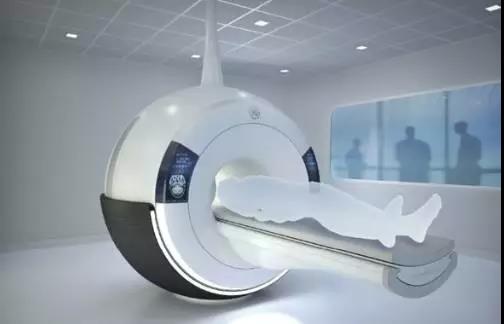
Magnetic resonance equipment is the use of magnetic field imaging, it can be said that MR is a huge magnet, with a powerful attraction. Magnetic metal objects are brought into the magnetic resonance examination room, and if attracted, it becomes a flying "bullet" and is extremely dangerous. Therefore, it is strictly forbidden to bring ferromagnetic items into the inspection room, including: mobile phones, USB drives, watches, electronic products, keys, lighters, metal coins, knives, pens, needles, nails, wire and other ferromagnetic products; hairpins, hair cards, glasses, metal jewelry, unidentified material items; hospital beds, wheelchairs, etc.
In addition, with the application of biomaterials, patients have more and more implants (such as stents), for this situation how do we deal with it?
1, infusion pump, insulin pump
Infusion pumps are mostly non-ferrous or weak magnetic, the magnetic field will not occur deformation distortion, can be done MRI inspection. Patients wearing insulin pumps are strictly prohibited from CARRYing MRI, CT, X-ray and entering the operating room to avoid accidents. The patient may remove the insulin pump and do this type of test.
2, coronary veins and peripheral vascular stents
According to the American Heart Association (AHA), almost all crown stents on the market are tested and mark MR safety. In addition to the possibility of weak magnetism in early peripheral arterial stents (before 2007), all stent products are safe under .0TMR. For weak magnetic peripheral arterial stents, it is generally considered that magnetic field contact after 6 weeks is no problem. In addition, spring rings, filters, arterial clips and artificial blood vessels are also recommended in June after implantation can be AN MR examination.
3. Pacemaker/Brain Pacemaker
Traditional pacemakers and pacemakers enter the magnetic field environment, may cause the device shift, program changes and other disruption of normal pacemaker work, so the MR test is prohibited. Currently, MR-compatible pacemaker Ensura DR MRI SureScan, the ACTIVA ® series in the brain pacemaker has been applied in clinical practice, and some products installed many years ago are safe to consult a clinician through MR tests before deciding.
4. Electronic cochlear implants
Electronic cochlear implants generally have ferromagnetic complexes as external magnets and implanted radio frequency coils in the patient's skull. Therefore, the magnetic field will interfere with the work of electronic components, heat, damage to tissue, such patients should also be prohibited from entering the mrI examination room, or surgical removal of magnets before the examination.
5, heart valve
Artificial heart valves are mostly not ferromagnetic, but the inspection should also be checked before the instructions, due to the magnetic field caused by the distortion force relative to the heart beat blood flow impact is much smaller, generally considered to be ABLE to perform MR examination.
6. Orthopaedic implants
Orthopaedic implants such as steel plates, steel nails, screws and various artificial joints, mostly non-magnetic or partially weak magnetic, because the operation has been firmly fixed in the bones, muscles, usually do not cause movement, so it is safe, but the pseudo-shadow of the implant site is inevitable.
7. Dental implants
Planting teeth, fixed dentures, porcelain teeth and other parts have ferromagnetic or weak magnetic, but because it has been firmly fixed on the tooth slot bone, it can also be ABLE to do MR examination. But there are artifacts at the local end. Patients with active dentures should remove the dentures before having an MR test.
In practice, each patient will receive an MRI before the MRI examination, and the content of the "check" is basically the above content. Therefore, for the safety of yourself and others, do not suspect the doctor!






